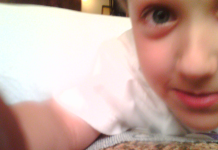Frostbite is a type of injury caused by freezing. It leads to a loss of feeling and color in the areas it affects, usually extremities such as the nose, ears, cheeks, chin, fingers, and toes. Frostbite can permanently damage the body, and severe cases can lead to amputation.
With the temps recently at right around -34° I had the opportunity to experience a mild case of frostbite. On January 11th it was -17° and I was helping a friend hurry up and finish a siding job on the west end of town. At the end of the day I discovered a finger and a couple of toes weren’t feeling just right and realized that I might have been hurrying just a little too hard on that day.
The last time I got frostbit was on my ears in December 2008 up at the Gates of the Mountains. You’d think I’d learn but sometimes I might get a little careless and I have to be reminded all over again. I know how I got Frostbite and you might think that with all of the years of living in Montana that I’d know better, but cold weather is what it is and here we are. Guess I’m just a little too used to it.
At any rate, all is well … at least in my case. There are those however that may not be as fortunate.
Frostbite is a form of thermal injury that can have devastating consequences for patients, including digit amputations and sometimes more proximal amputations.
The first order of business with regard to Frostbite is to —
Recognize the severity:
Frostnip (early stage):
Your skin changes color (depending on your natural skin tone, it may look red, purple, or lighter than normal).
Your skin may itch, sting, burn, or feel like “pins and needles”.
After rewarming your skin, you may get chilblains.
Superficial frostbite:
Your skin may sting or swell.
Your skin may become hard and may look shiny or waxy.
When your skin thaws, you may get painful patches that look like a bruise.
Your skin may also peel and hurt like a sunburn, and you may get blisters after 1-2 days.
Severe (deep) frostbite:
Your skin may be completely numb, and it may be difficult to move that area or move it normally.
You may lose all sensation in the frostbitten area, and your joints and muscles may stop working.
Your skin may become hard and black and may also fall off.
You may get large blisters 2-4 days after your skin thaws.
You may have a greater chance of developing frostbite if you have poor blood circulation or are not properly dressed for extremely cold temperatures.
How to prevent Frostbite:
The following measures can minimize the risk of frostbite:
Protecting skin from moisture, wind, and exposure to cold.
Avoiding perspiration or wet extremities.
Increasing insulation and skin protection (e.g., adding layers of clothing, wearing mitts instead of gloves).
Avoiding alcohol, illicit drugs, or medications that reduce perfusion.
Avoiding cold weather exposure during illness.
Using chemical or electric hand and foot warmers.
Avoiding the use of skin emollients, which do not protect against frostbite and may actually increase risk.
Maintaining adequate hydration and nutrition.
Minimizing blood flow constriction caused by tight clothing or footwear.
Minimizing duration of exposure to cold.
Frequently assessing for extremity numbness or pain and warming extremities as soon as possible if there is concern that frostbite is developing.
Recognizing frostnip or superficial frostbite before it becomes more serious.
sourced:
https://www.aafp.org/pubs/afp/issues/2020/0401/p440.html
https://www.cdc.gov/disasters/winter/staysafe/hypothermia.html
https://www.webmd.com/skin-problems-and-treatments/frostbite-how-spot-treat-prevent
https://pubmed.ncbi.nlm.nih.gov/29931369/






